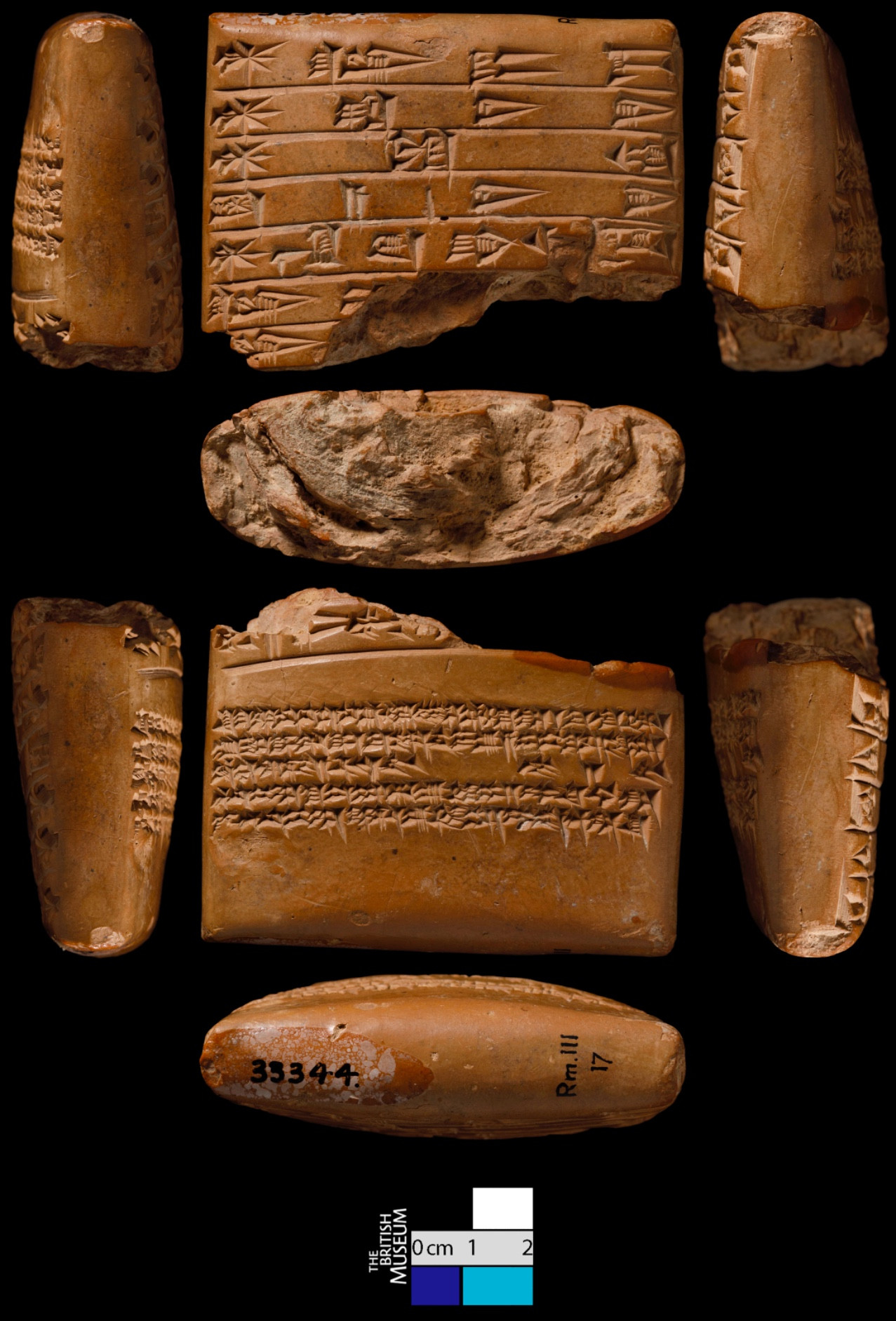If it looks like there are two different fonts on this clay tablet from ancient Babylon, that’s because there are.
In December of 603 BCE, a young scribe named Balāṭa made a faithful copy of a far more ancient inscription of Sîn-Kashid who had ruled Uruk over 1,000 years earlier.
In December of 603 BCE, a young scribe named Balāṭa made a faithful copy of a far more ancient inscription of Sîn-Kashid who had ruled Uruk over 1,000 years earlier.

Comments
*pterodactyl screech*
AHHHHHHHHH!!!!!!!
The signs are larger here and reflect an older “font”. Was he copying from an original that was over 1,000 years old to him?
In the bottom part of this tablet, Balāṭa “signs” the copy and gives a date equivalent to December 3, 603 BCE during the reign of Nebuchadnezzar II.
He uses the contemporary cuneiform “font” (and Akkadian language)
An artefact within an artefact.
Two languages and script styles side by side, and a scribe doing history in a sense circa 600 BCE.
They have the added bonus over me that they'd get to hold them and also actually know how to read them haha.
I was gonna ask how they carved the delicate smaller part into a 1000 year old tablet by that point. I was confused...
Quick question that just popped up on my mind: do we have any information on handedness??
(And thank you! 😅)
If cuneiform continued I wander if it would have had a similar evolution of mixing fonts.
And how did they come by the clay?